You are here : ILVENResearch TeamsMIMMaterials@MIM
- Partager cette page :
- PDF version
Materials@MIM
The activity of the " Materials" axis is dominated by the design of composite materials. These materials combine a wide range of inorganic components, from molecular complexes (POMs) to inorganic clusters or nanoparticles (gold, metal oxides) or porous hybrid materials such as MOFs. A major focus is on the design of nanocomposites coupling MOF nanoparticles (nanoMOFs) to various inorganic (POMs, oxides) or (bio)organic (biopolymers, carbon materials, enzymes, cells) components. The materials obtained are being studied for various energy, environmental and biomedical applications.
POM@MOFs
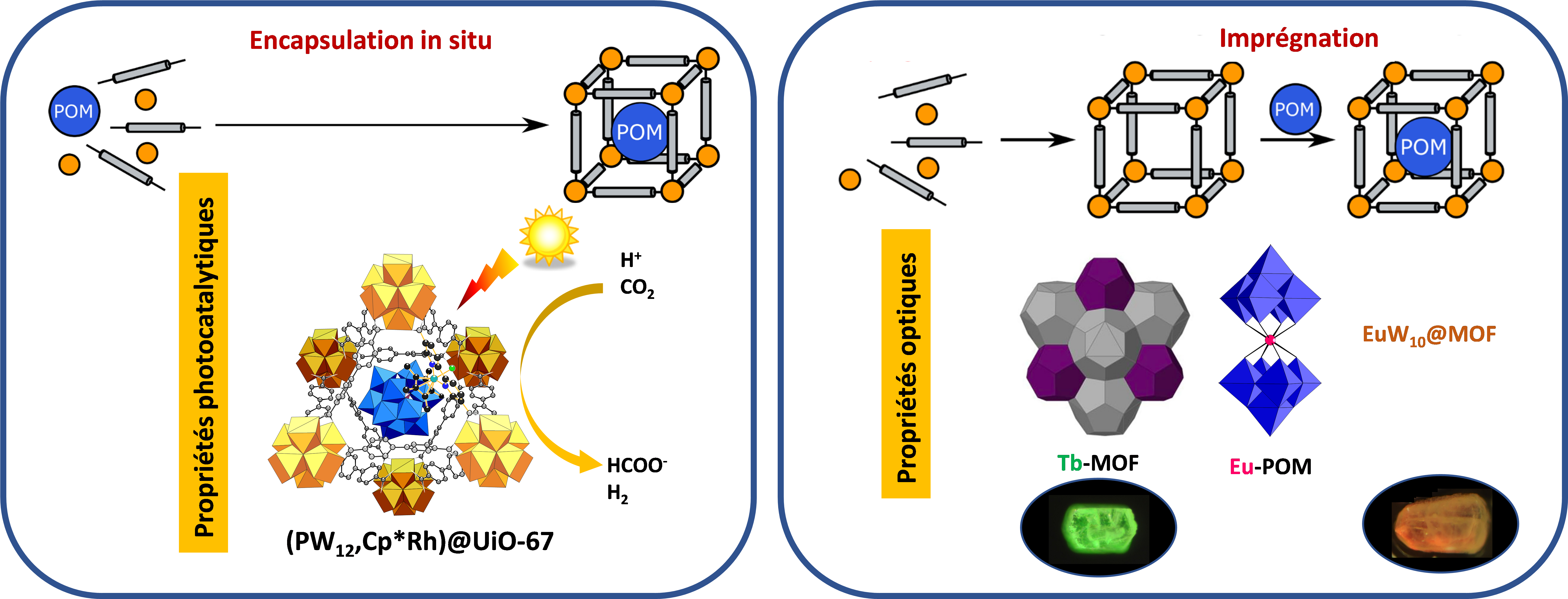 These composite materials result from the immobilization of POMs in the cavities of MOF-type materials. These POM@MOFs are being studied for their photocatalytic properties (CO2 reduction, water oxidation), with the POM acting as a catalyst or electron reservoir, but also for their optical properties. For example, the immobilization of a luminescent POM in a luminescent MOF has led to the first luminescent ratiometric thermometer of the POM@MOF type.
These composite materials result from the immobilization of POMs in the cavities of MOF-type materials. These POM@MOFs are being studied for their photocatalytic properties (CO2 reduction, water oxidation), with the POM acting as a catalyst or electron reservoir, but also for their optical properties. For example, the immobilization of a luminescent POM in a luminescent MOF has led to the first luminescent ratiometric thermometer of the POM@MOF type.Recent publications
Nanocomposites based on POMs and gold nanoparticles
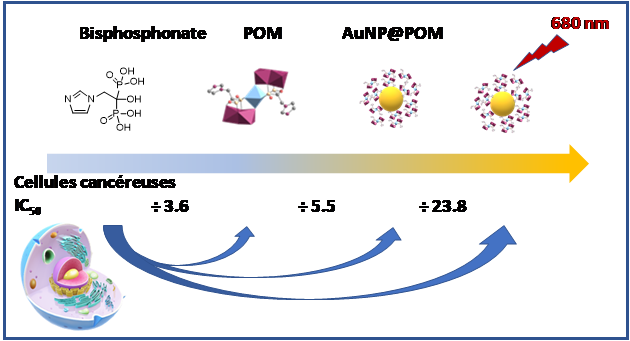
Recent publications
Nanocomposites based on MOFs and polymers or carbonaceous materials for CO2 capture
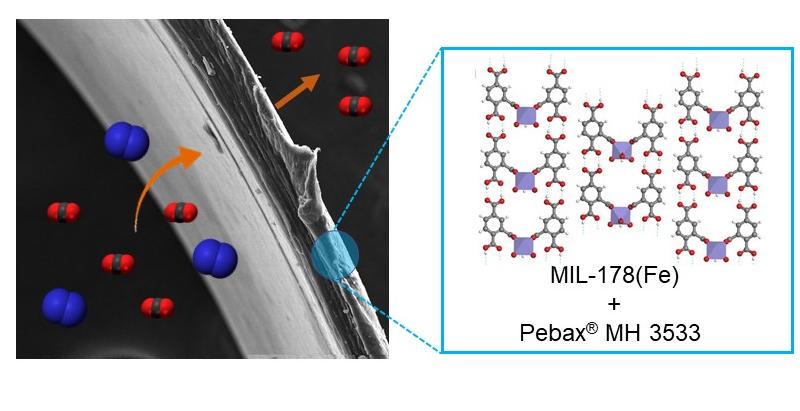 The MIM team is working on the design of nanocomposites coupling MOFs and polymers or carbonaceous materials (graphene oxide, carbon nitride) for CO2 separation in post-combustion processes (CO2/N2 separation) and for photocatalytic CO2 conversion. We are also studying the structuring role of graphene oxide in the nucleation and growth of MOFs.
The MIM team is working on the design of nanocomposites coupling MOFs and polymers or carbonaceous materials (graphene oxide, carbon nitride) for CO2 separation in post-combustion processes (CO2/N2 separation) and for photocatalytic CO2 conversion. We are also studying the structuring role of graphene oxide in the nucleation and growth of MOFs.
Nanocomposites based on MOFs and polymers for the capture of volatile organic compounds
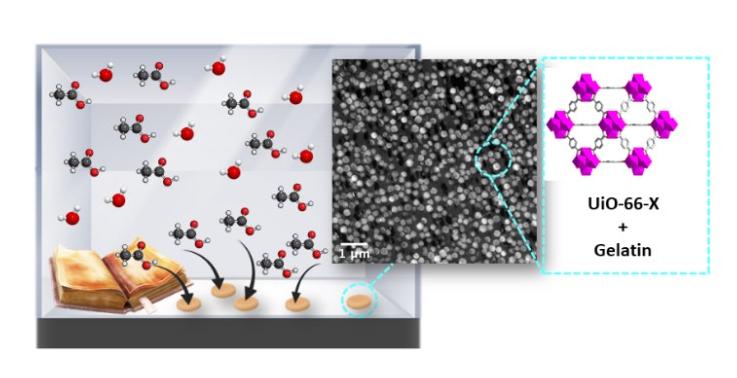 The MIM team is involved in an interdisciplinary theme at the interface of heritage sciences and materials sciences. The aim is to design new MOF-based adsorbents for the capture of VOCs emitted in the ambient environment of museums. Our main focus is on the capture of acetic acid, a VOC highly emitted in museums due to the degradation of all cellulose-based materials (photographic films, books, furniture, etc.).
The MIM team is involved in an interdisciplinary theme at the interface of heritage sciences and materials sciences. The aim is to design new MOF-based adsorbents for the capture of VOCs emitted in the ambient environment of museums. Our main focus is on the capture of acetic acid, a VOC highly emitted in museums due to the degradation of all cellulose-based materials (photographic films, books, furniture, etc.).
Recent publications
Porous biohybrid composites
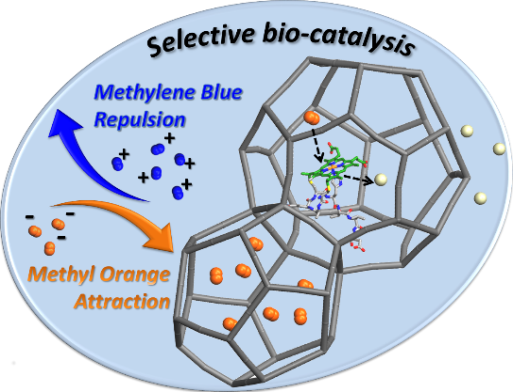
The MIM team is developing a new family of porous biohybrid materials coupling MOFs and a wide range of biological components, from proteins such as enzymes and antigens to bacteria. The aim is to build new complex materials at the interface between the porous architecture of MOFs and the world of living organisms, opening up prospects in a wide range of applications (catalysis, health, environment) with major societal implications.
Recent publications
Nano-objects coupling MOFs and inorganic nanoparticles
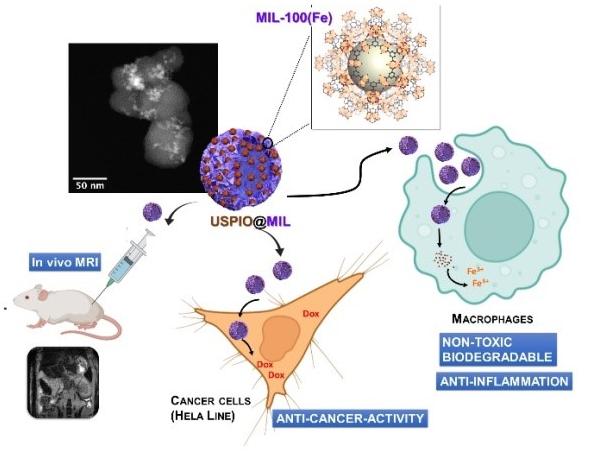 The MIM team is working on the design of new therapeutic vectors with dual functionality (therapy and imaging) by combining iron-based MOF nanoparticles (MIL-100(Fe)) with various inorganic nanoparticles (Au, Fe2O3...). This approach has the advantage of coupling the controlled drug release properties of nanoMOFs with the optical properties of gold or the magnetic properties of gFe2O3, which are very useful in medical imaging (optical contrast agent or MRI ).
The MIM team is working on the design of new therapeutic vectors with dual functionality (therapy and imaging) by combining iron-based MOF nanoparticles (MIL-100(Fe)) with various inorganic nanoparticles (Au, Fe2O3...). This approach has the advantage of coupling the controlled drug release properties of nanoMOFs with the optical properties of gold or the magnetic properties of gFe2O3, which are very useful in medical imaging (optical contrast agent or MRI ).
Recent publications
Soft chemistry perovskite nanocrystals
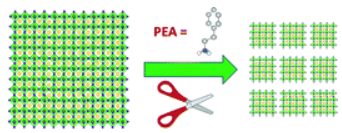
In collaboration with the LuMIn team (ENS-Paris Saclay), we are developing soft chemistry methods for the large-scale production of monodisperse perovskite CsPbBr3 nanocrystals. This approach is promising for the large-scale synthesis of this type of photoactive material for optoelectronic devices such as LEDs or photodetectors.






